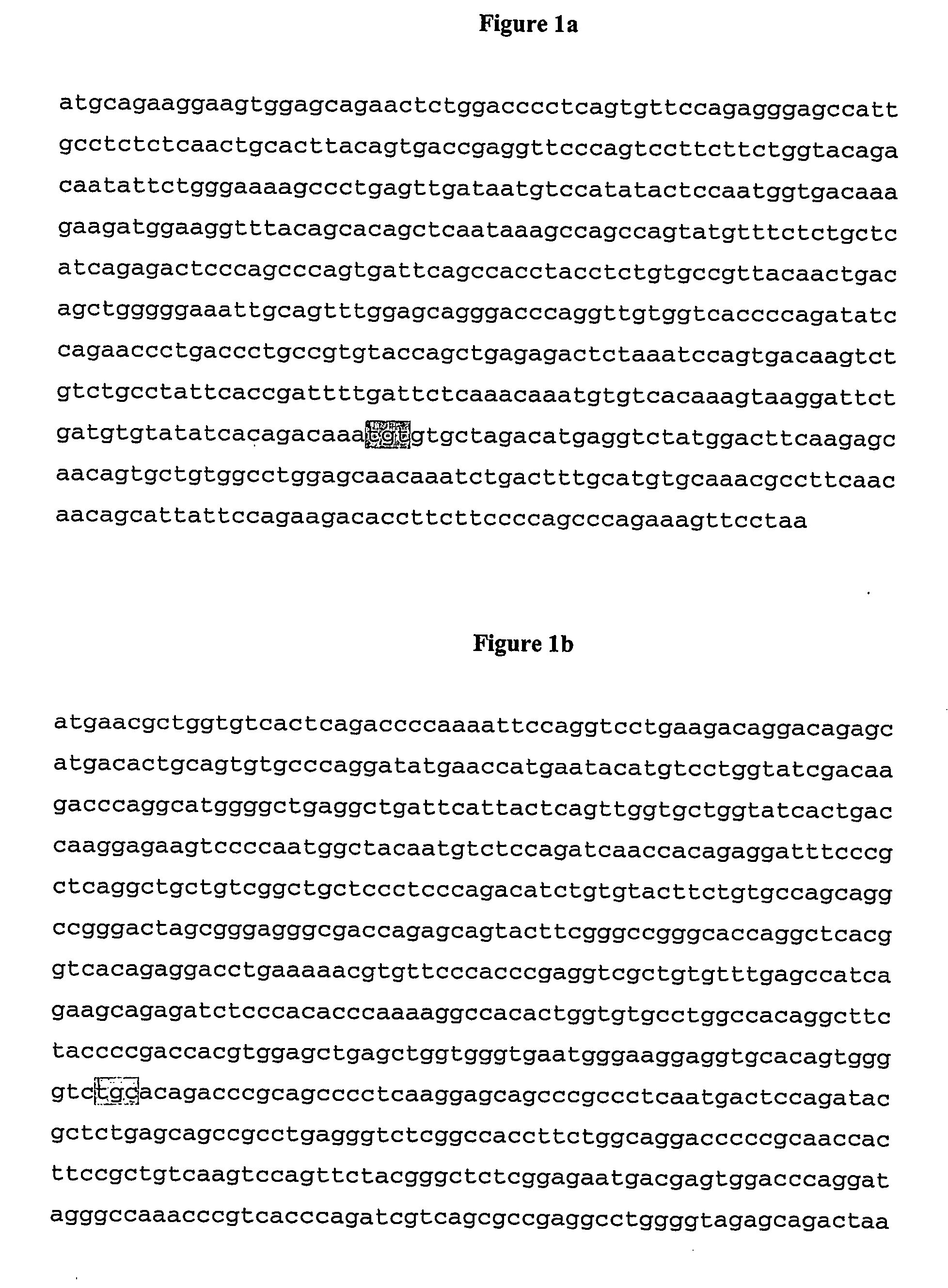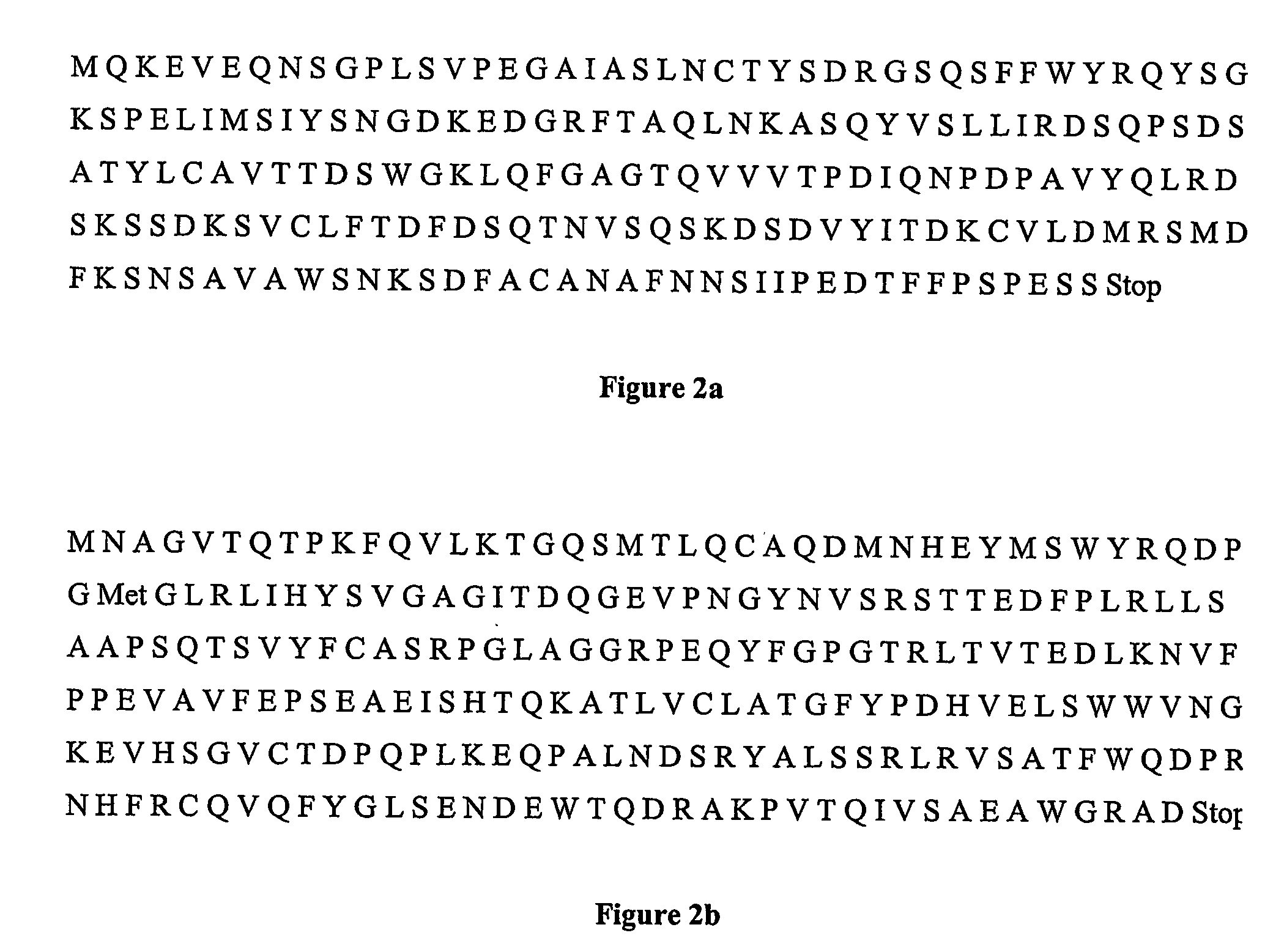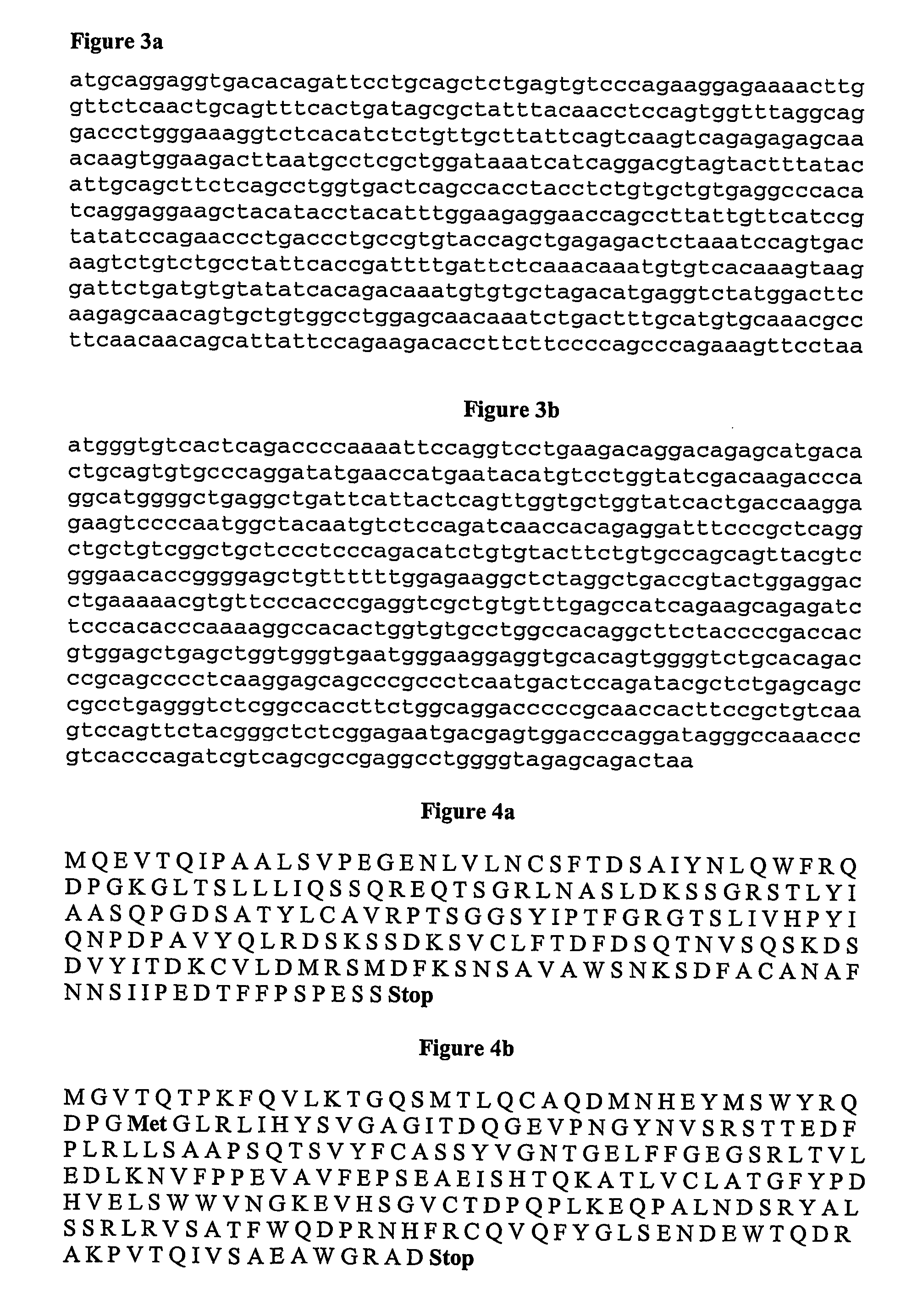Receptors
a technology of receptors and receptors, applied in the field of receptors, can solve the problems of inability to identify appropriate sites, inability to recognize native ligands at relatively high concentrations, and failure to achieve functional alpha/beta analogues such as sctcrs, etc., to achieve the effect of improving affinity for their cognate ligands and increasing plasma half-li
- Summary
- Abstract
- Description
- Claims
- Application Information
AI Technical Summary
Benefits of technology
Problems solved by technology
Method used
Image
Examples
example 1
Design of Primers and Mutagenesis of A6 Tax TCR α and β Chains
[0163] For mutating A6 Tax threonine 48 of exon 1 in TRAC*01 to cysteine, the following primers were designed (mutation shown in lower case):
5′-C ACA GAC AAA tgT GTG CTA GAC AT5′-AT GTC TAG CAC Aca TTT GTC TGT G
[0164] For mutating A6 Tax serine 57 of exon 1 in both TRBC1*01 and TRBC2*01 to cysteine, the following primers were designed (mutation shown in lower case):
5′-C AGT GGG GTC tGC ACA GAG CC5′-GG GTC TGT GCa GAC CCC ACT G
PCR Mutagenesis:
[0165] Expression plasmids containing the genes for the A6 Tax TCR α or β chain were mutated using the α-chain primers or the β-chain primers respectively, as follows. 100 ng of plasmid was mixed with 5 μl 10 mM dNTP, 25 μl 10×Pfu-buffer (Stratagene), 10 units Pfu polymerase (Stratagene) and the final volume was adjusted to 240 μl with H2O. 48 μl of this mix was supplemented with primers diluted to give a final concentration of 0.2 μM in 50 μl final reaction volume. After an in...
example 2
Production of Soluble NY-ESO TCR Containing a Novel Disulphide Bond
[0166] cDNA encoding NY-ESO TCR was isolated from T cells supplied by Enzo Cerundolo (Institute of Molecular Medicine, University of Oxford) according to known techniques. cDNA encoding NY-ESO TCR was produced by treatment of the mRNA with reverse transcriptase.
[0167] The β chain of the soluble A6 TCR prepared in Example 1 contains in the native sequence a BglII restriction site (AAGCTT) suitable for use as a ligation site.
[0168] PCR mutagenesis was carried as detailed below to introduce a BamH1 restriction site (GGATCC) into the α chain of soluble A6 TCR, 5′ of the novel cysteine codon. The sequence described in FIG. 1a was used as a template for this mutagenesis. The following primers were used:
|BamHI |5′-ATATCCAGAACCCgGAtCCTGCCGTGTA-3′
[0169] In order to produce a soluble NY-ESO TCR incorporating a novel disulphide bond, A6 TCR plasmids containing the α chain BamHI and β chain BglII restriction...
example 3
Production of Soluble NY-ESO TCR Containing a Novel Disulphide Inter-Chain Bond, and an Additional Cysteine Residue on the C-Terminus of the β-Chain
[0171] In order to produce a soluble NY-ESO TCR incorporating a novel disulphide bond and a cysteine residue on the C-terminus of the β chain plasmids containing the α chain BamHI and β chain BglII restriction sites were used as a framework as described in Example 2. The following primers were used:
| NdeI |5′-GGAGATATACATATGCAGGAGGTGACACAG-3′5′-TACACGGCAGGATCCGGGTTCTGGATATT-3′ | BamHI | | NdeI |5′-GGAGATATACATATGGGTGTCACTCAGACC-3′5′-CCCAAGCTTAACAGTCTGCTCTACCCCAGGCCTCGGC-3′ |BglII |
[0172] NY-ESO TCR α and β-chain constructs were obtained by PCR cloning as follows. PCR reactions were performed using the primers as shown above, and templates containing the NY-ESO TCR chains. The PCR products were restriction digested with the relevant restriction enzymes, and cloned into pGMT7 to obtain expression ...
PUM
| Property | Measurement | Unit |
|---|---|---|
| volume | aaaaa | aaaaa |
| volume | aaaaa | aaaaa |
| pH | aaaaa | aaaaa |
Abstract
Description
Claims
Application Information
 Login to View More
Login to View More - R&D
- Intellectual Property
- Life Sciences
- Materials
- Tech Scout
- Unparalleled Data Quality
- Higher Quality Content
- 60% Fewer Hallucinations
Browse by: Latest US Patents, China's latest patents, Technical Efficacy Thesaurus, Application Domain, Technology Topic, Popular Technical Reports.
© 2025 PatSnap. All rights reserved.Legal|Privacy policy|Modern Slavery Act Transparency Statement|Sitemap|About US| Contact US: help@patsnap.com



